Kansas City needs blood donors. I gave for the first time & found out just how easy it is
Kansas City is running out of blood.
No, there isn’t a scourge of hungry vampires on the loose. But blood reserves are depleted due to a steep decline in donors and pop-up blood drives at schools and workplaces since the start of the pandemic. That’s why The Star is partnering with the Community Blood Center on Tuesday, Jan. 24 to help address this timely challenge.
“About 20,000 blood donors just here in the KC metro were regularly donating in 2019, and haven’t come back since,” said Chelsey Smith, a spokesperson for the center. “When we’re in times of shortage like we have been for the past three years, all blood types are needed.”
But what is the experience of donating blood actually like? I took a trip to the Community Blood Center on Tuesday to make my very first blood donation and demystify the process.
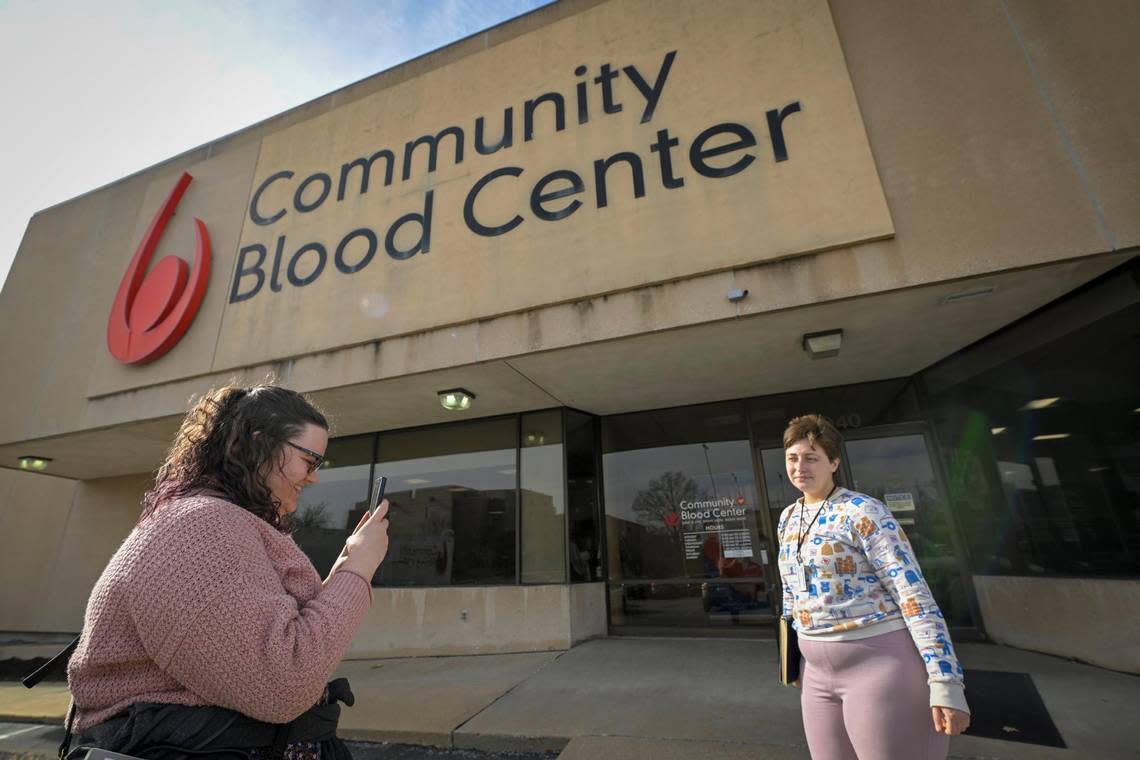
Step 1: Make an Appointment
This step is optional, but can be helpful for those who like the security of a scheduled time. To sign up to donate blood, simply call the Community Blood Center at 877-468-6844 or make an appointment online.
You can also walk into the Kansas City center at 4040 Main St. to donate blood without an appointment. It’s open from 8 a.m. until 6 p.m. Monday through Thursday, and 7 a.m. until 4 p.m. on Friday.
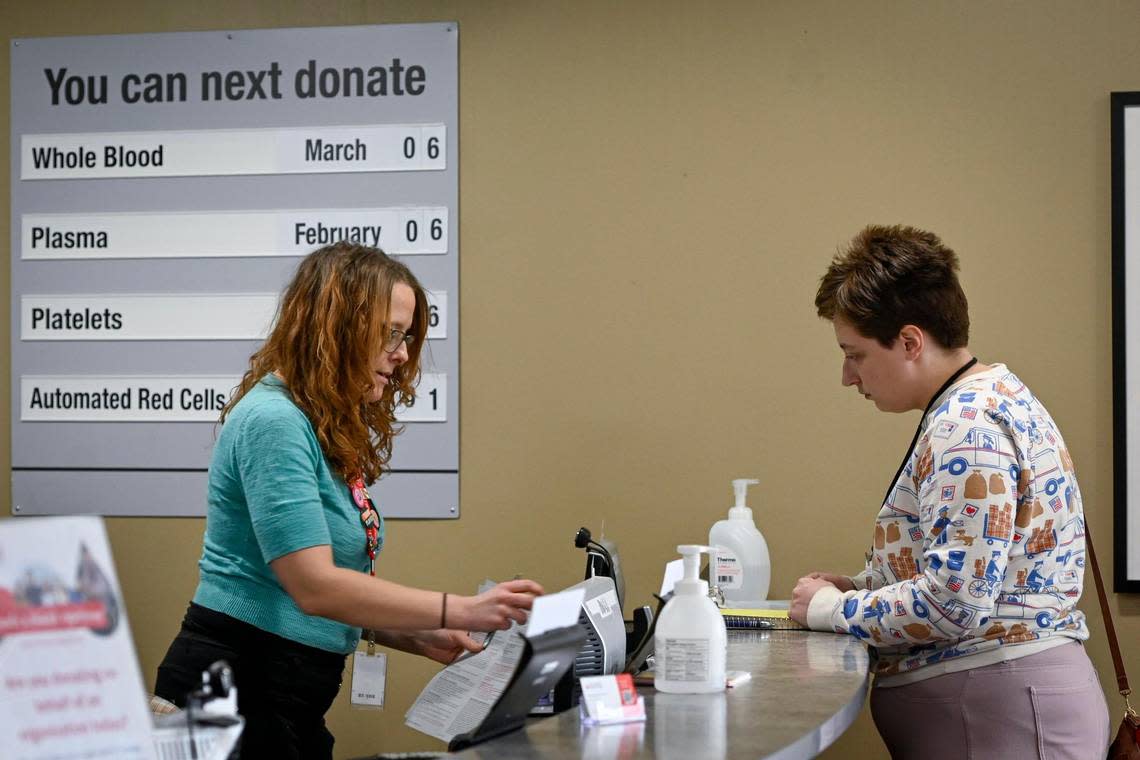
Step 2: Prepare to Donate
The Community Blood Center recommends preparing for your donation a couple days in advance by drinking plenty of water. Dehydration causes the veins to constrict, making them harder for the needle to find. I made sure to refill my water bottle often while going about my day on Monday.
The blood bank also recommends eating salty snacks the evening before a donation, getting lots of sleep and having a good meal before donating. All these can help quell feelings of nausea and ensure your body can handle losing the blood you donate.
I noshed on lasagna the evening before my donation and had a good breakfast on Tuesday morning. I also snacked on some almonds, dried cranberries and cheddar cheese cubes about an hour before my appointment at the center. Well-hydrated and nourished, I was ready to donate.
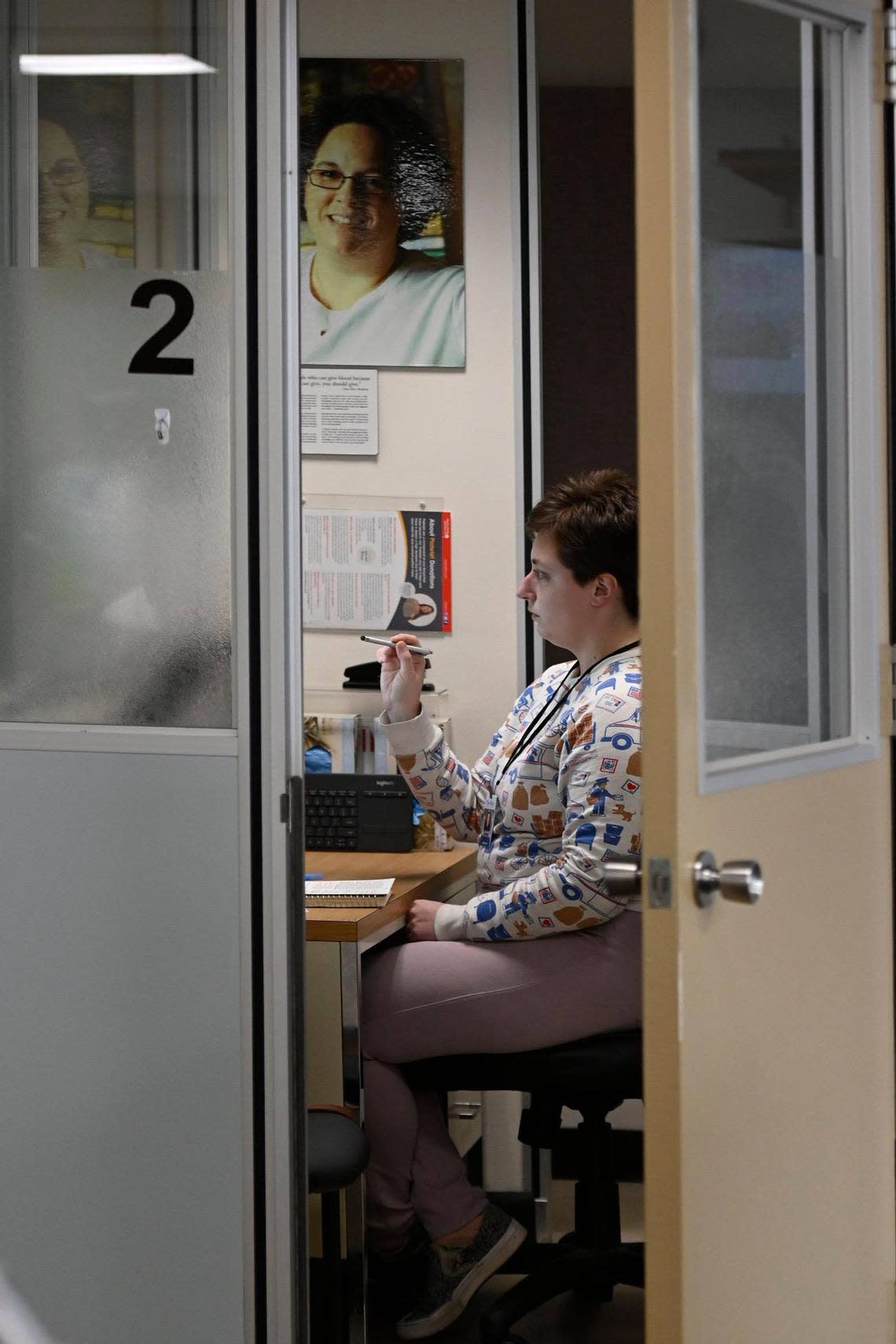
Step 3: Intake at the Blood Center
I rolled up to the center at 12:45 p.m, just in time for my appointment. I chose to have a friend drive me there in case I was feeling woozy after donating. That friend was Chandler Boese, one of The Star’s audience growth producers, who helped document my journey. Inside, we were also joined by center spokesperson Chelsey Smith and Star photographer Tammy Ljungblad.
I then completed some intake paperwork that asked about my health, lifestyle and international travel. I learned that you shouldn’t donate blood if you have ever had a blood-borne disease like HIV or ebola, if you have engaged in sex work in the past three months or if you are a man who has had sex with another man in the past three months. These rules are based on federal guidelines for blood donation.
Smith told us that there are some common misconceptions about who can and cannot donate blood. For example, anyone who has gotten a tattoo at a licensed parlor is still eligible to donate with no waiting period. You can also donate blood if you smoke marijuana or take prescription medication — as long as you aren’t intoxicated while you donate.
You shouldn’t donate if you have had COVID-19 symptoms in the past 14 days. However, once you have been symptom-free for two weeks, you’re welcome to donate blood.
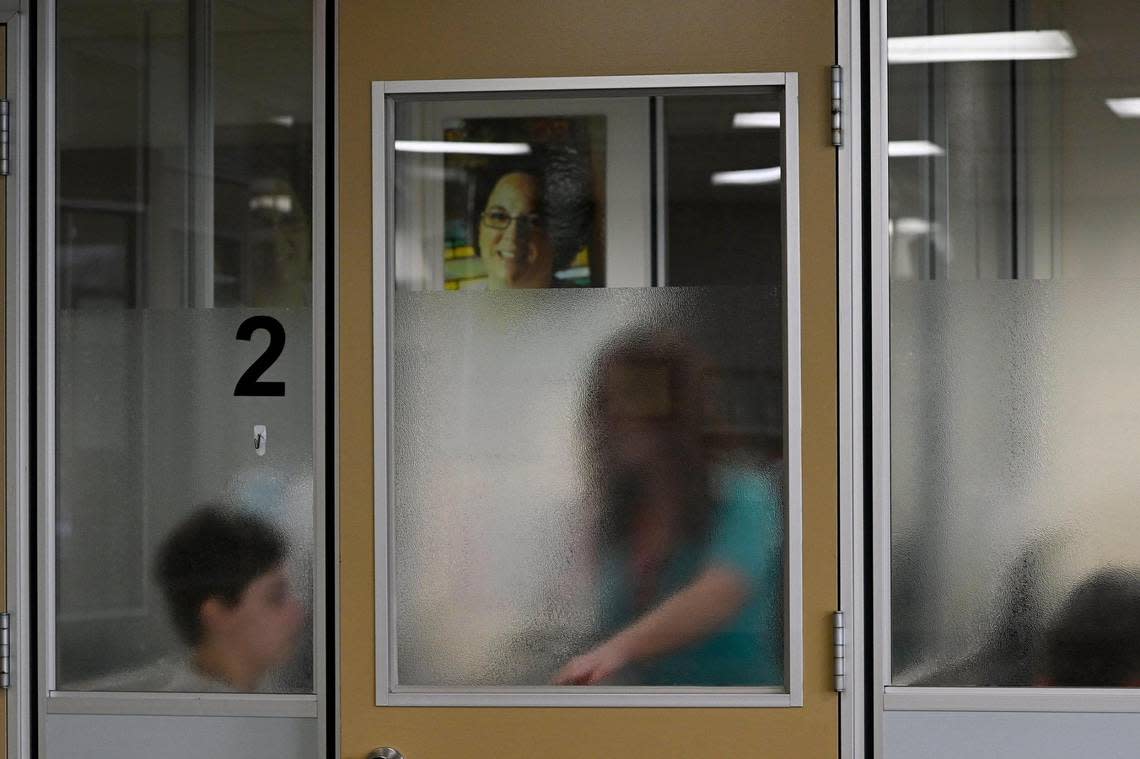
Step 4: Mini physical
Next, I stepped into a small booth where a nurse took my temperature and measured my blood pressure and heart rate. This step was to ensure I was in good enough health to give blood. At first my pulse was a little high, so she instructed me to drink cold water and relax for five minutes before checking again.
The nurse also pricked my finger in order to test my iron levels. The prick was quick and felt like a sharp pinch, no worse than a paper cut. After that, she wrapped my fingertip in a bandage and led me to the donation room.
Pro tip: Learn from my mistake! I wore a comfy sweatshirt to the blood center, but I couldn’t roll the sleeve up high enough for the blood pressure cuff to fit around my arm above the elbow. Make sure you wear a short-sleeved shirt under a sweater or cardigan, or else wear a top with very loose sleeves to donate blood. In my case, the blood center offered me a gigantic Chiefs tee shirt they had available — but don’t count on them having a change of clothes for you!
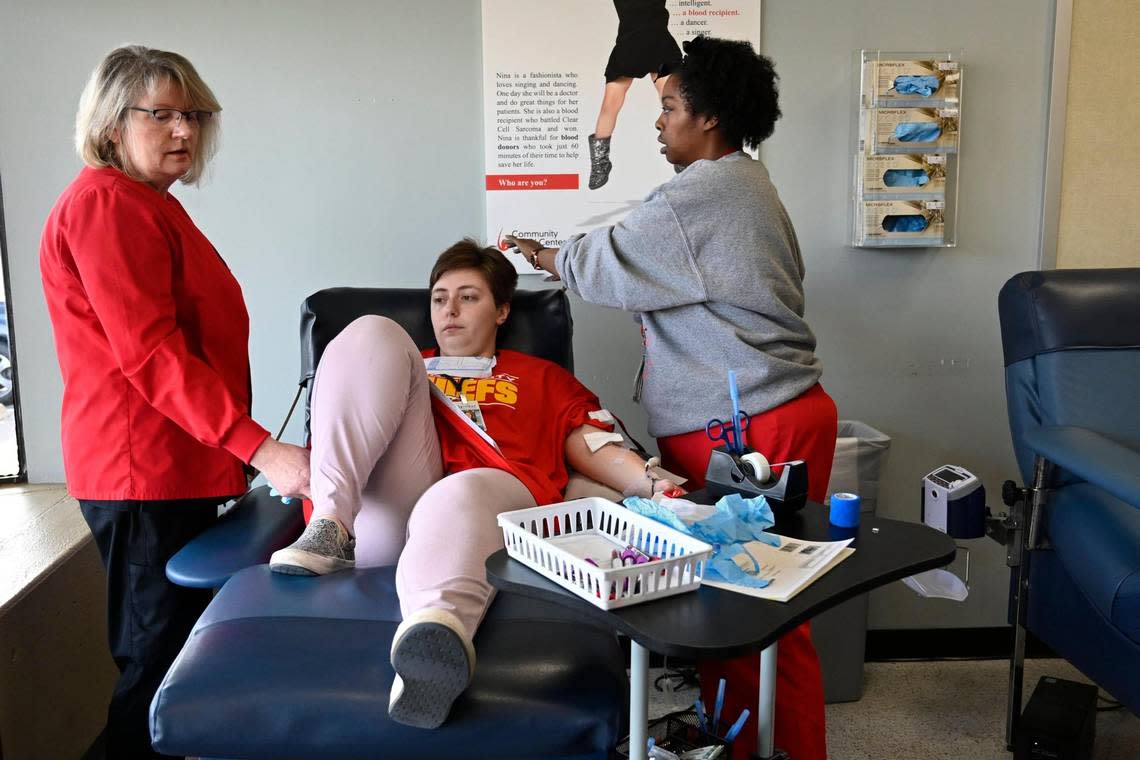
Step 5: Giving blood
With my vitals checked and my paperwork completed, I proceeded to a wide, brightly lit room to make my donation. I settled into a comfy reclining chair and presented my left arm. The center lets you choose which arm you want blood drawn from — I’m right-handed, so I chose the left.
My phlebotomist — that’s a blood-drawing specialist — tightened a strap around my upper arm and had me squeeze a rubbery stress ball shaped like a heart. She then tapped her finger on my inner elbow to find a vein, and marked it by pressing a small plastic straw against my skin. So far, no discomfort — and she did a great job of communicating every step to me.
Next, she cleaned my inner elbow with an alcohol swab and quickly inserted a needle. I can honestly say that the blood-drawing needle was less painful than the finger-prick. My phlebotomist told me she hears that a lot. I chose to look away while the needle was being inserted, but aside from a quick, tiny pinch on entry, I didn’t feel it at all.
My donation took about 15 minutes. Aside from one dizzy spell near the end of the donation, I felt perfectly comfortable. My phlebotomist had me squeeze the stress ball occasionally to keep the blood flowing. She also taped a piece of gauze over the needle so I wouldn’t have to see it. The collection bag and most of the tubing hung below my arm rest — if I wanted to see it in action, I had to lean over the side of the bed.
Pro Tip: Learn from my mistake! Do not lean over the side of the bed to look at the collection bag and tubing. When I did, I felt a wave of dizziness and nausea — the only time I experienced it during the donation. The nurses in the room took great care of me with cold packs, sugary soda and advice to bend my knees up and rock them back and forth. They also suggested I cough deeply to move fresh blood up into my lungs. Next time I donate, I plan to simply relax and look at my phone without moving my head too much. If you really want to see your bag of donated blood, you’ll get a chance after the donation is over.
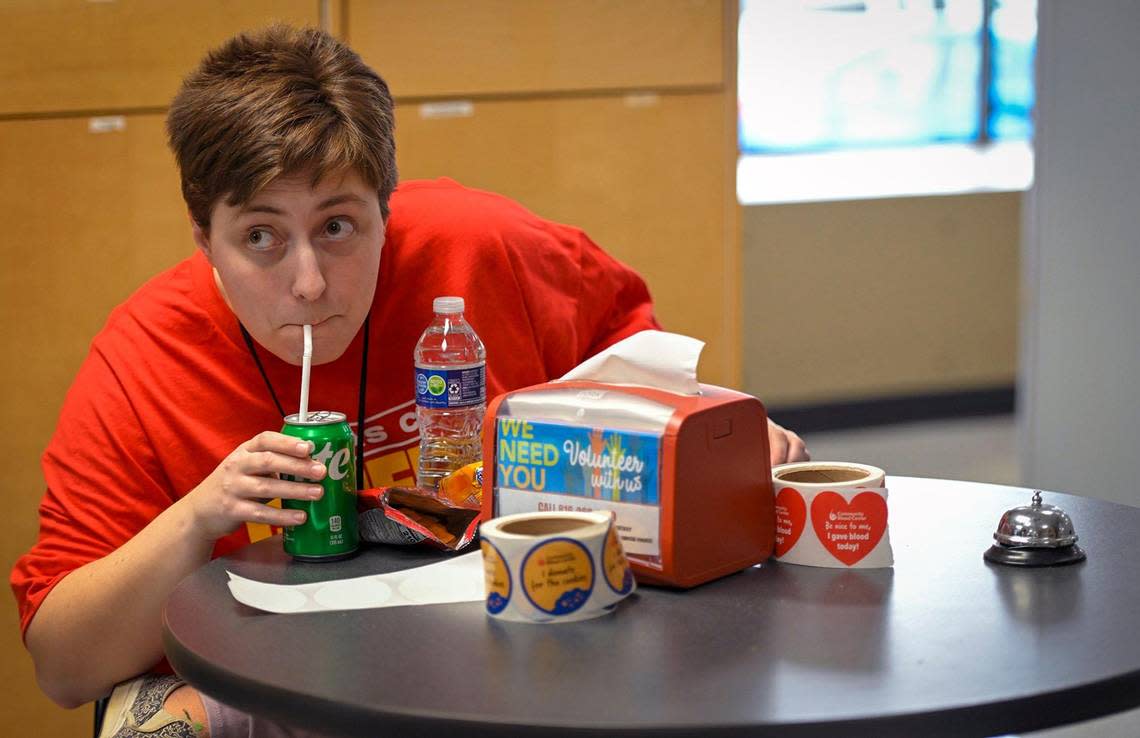
Step 6: Snack time
With my donation complete, my phlebotomist removed the needle from my arm and bandaged it with gauze. This didn’t hurt at all — I barely felt the needle being removed. She had me hold my arm vertical for a few minutes to reduce bleeding at the puncture site.
When I took off the bandage later, all I saw was a tiny dot in my inner elbow. Some people experience mild bruising at the needle site, but I haven’t noticed any.
Next came a trip to the “Revitalization Station” where I snacked on veggie chips, Oreos, cheese crackers, mini chocolate chip cookies and soda. These free snacks are on hand to help elevate donors’ blood sugar, replenish their nutrients and rehydrate them after their donation. I was also encouraged to eat a big, hearty meal afterwards — which I was more than happy to do.
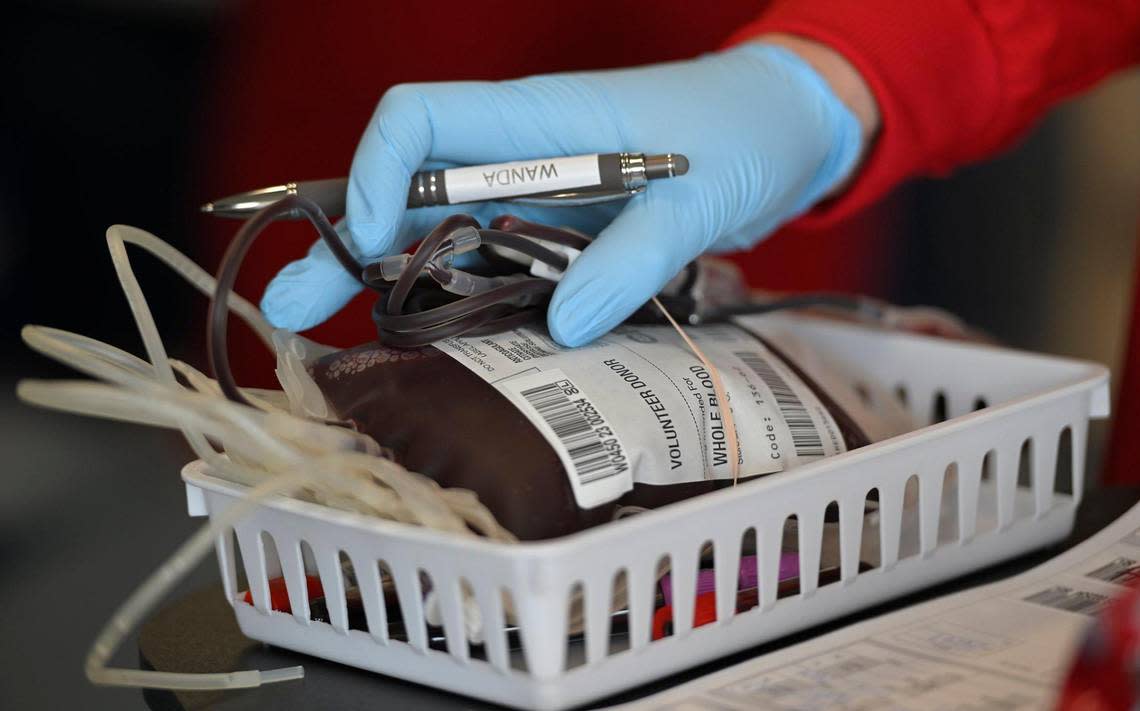
Step 7: Make a difference
Smith told me that my blood would first be tested for any diseases or conditions that could make it ineligible for donation. Then, it would be separated into its three constituent parts: red blood cells, platelets and plasma.
These components will then be delivered to area hospitals like Children’s Mercy, St. Luke’s, North Kansas City Hospital, The University of Kansas Health System and others. There, the components will be used to help patients — from infants to seniors. It might also be used for medical research.
“We like to say that the best time to donate blood is every eight weeks,” Smith added. “What we need in the KC area is 600 donors a day. If we’re seeing that throughout the year, then there isn’t a blood shortage.”
Overall, my donation experience was way easier than I thought it would be. While I was a little nervous at first, I found that the process was nearly painless and super rewarding. Plus, I got free snacks and a gigantic Chiefs shirt out of it.
Want to give back too? Stop by The Star’s blood drive on Tuesday, Jan. 24 at 2460 E. Pershing Road. You can sign up online here and use the code “4K.” We’ll validate your parking at Crown Center and provide everything you need to make a life-saving donation.
Do you have more questions about blood donation in Kansas City? Ask the Service Journalism team at kcq@kcstar.com.
